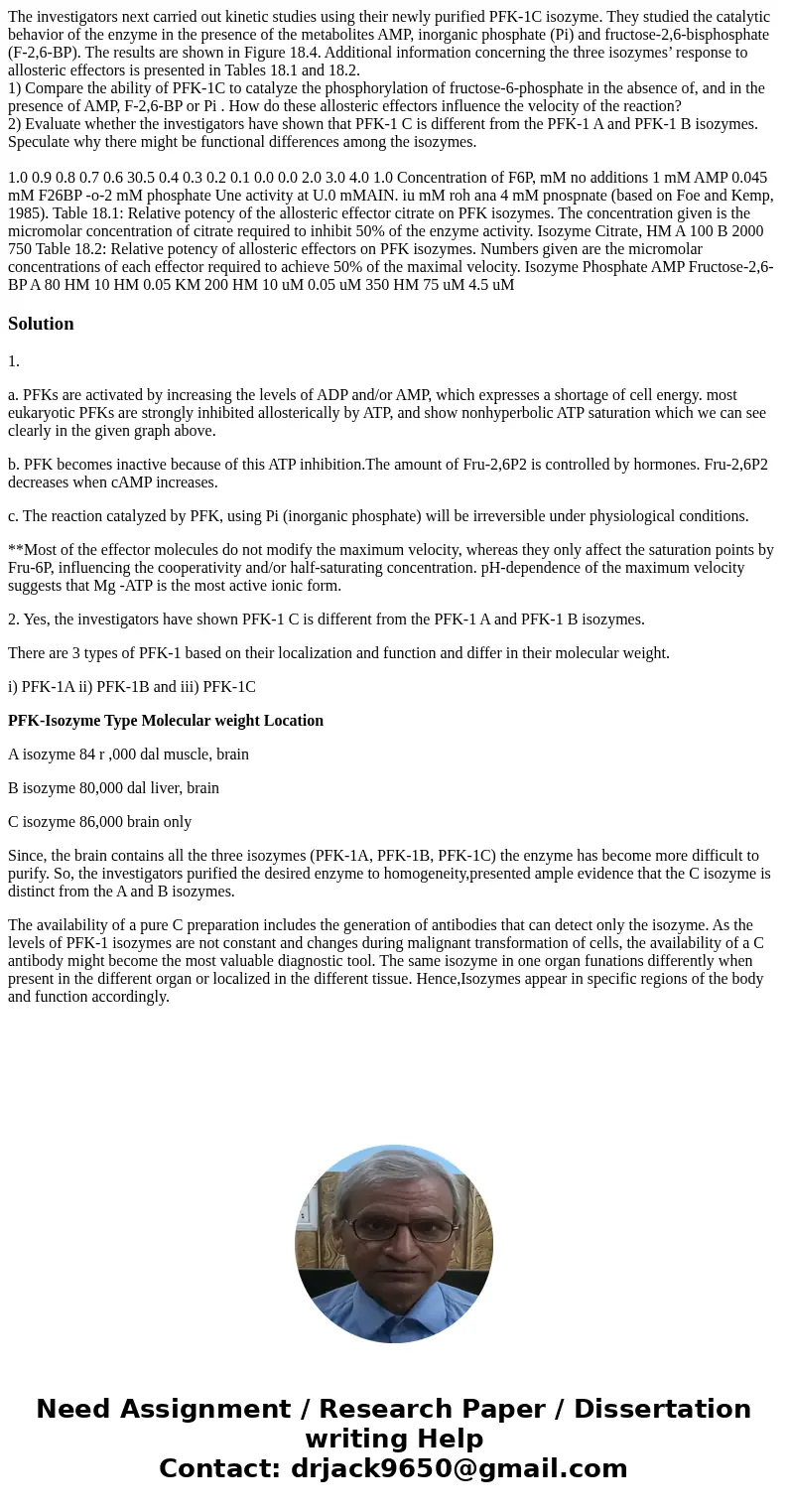The investigators next carried out kinetic studies using the
Solution
1.
a. PFKs are activated by increasing the levels of ADP and/or AMP, which expresses a shortage of cell energy. most eukaryotic PFKs are strongly inhibited allosterically by ATP, and show nonhyperbolic ATP saturation which we can see clearly in the given graph above.
b. PFK becomes inactive because of this ATP inhibition.The amount of Fru-2,6P2 is controlled by hormones. Fru-2,6P2 decreases when cAMP increases.
c. The reaction catalyzed by PFK, using Pi (inorganic phosphate) will be irreversible under physiological conditions.
**Most of the effector molecules do not modify the maximum velocity, whereas they only affect the saturation points by Fru-6P, influencing the cooperativity and/or half-saturating concentration. pH-dependence of the maximum velocity suggests that Mg -ATP is the most active ionic form.
2. Yes, the investigators have shown PFK-1 C is different from the PFK-1 A and PFK-1 B isozymes.
There are 3 types of PFK-1 based on their localization and function and differ in their molecular weight.
i) PFK-1A ii) PFK-1B and iii) PFK-1C
PFK-Isozyme Type Molecular weight Location
A isozyme 84 r ,000 dal muscle, brain
B isozyme 80,000 dal liver, brain
C isozyme 86,000 brain only
Since, the brain contains all the three isozymes (PFK-1A, PFK-1B, PFK-1C) the enzyme has become more difficult to purify. So, the investigators purified the desired enzyme to homogeneity,presented ample evidence that the C isozyme is distinct from the A and B isozymes.
The availability of a pure C preparation includes the generation of antibodies that can detect only the isozyme. As the levels of PFK-1 isozymes are not constant and changes during malignant transformation of cells, the availability of a C antibody might become the most valuable diagnostic tool. The same isozyme in one organ funations differently when present in the different organ or localized in the different tissue. Hence,Isozymes appear in specific regions of the body and function accordingly.

 Homework Sourse
Homework Sourse